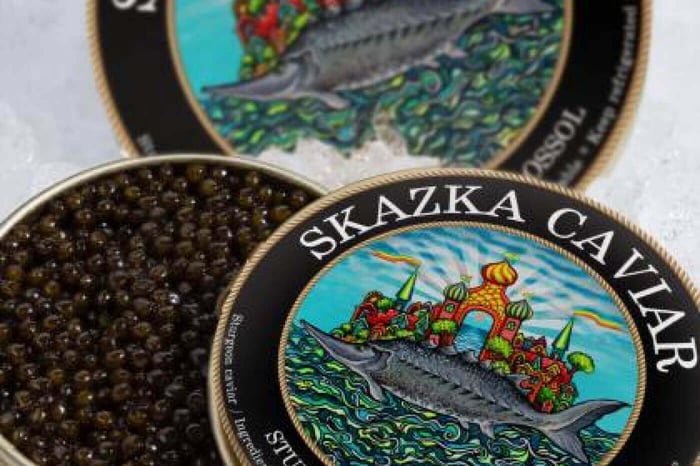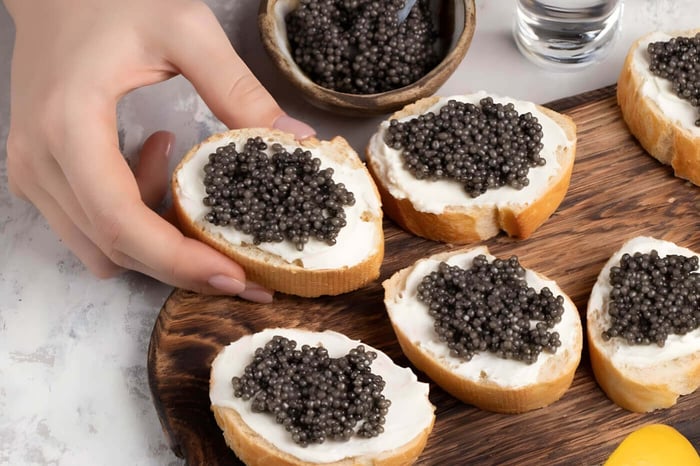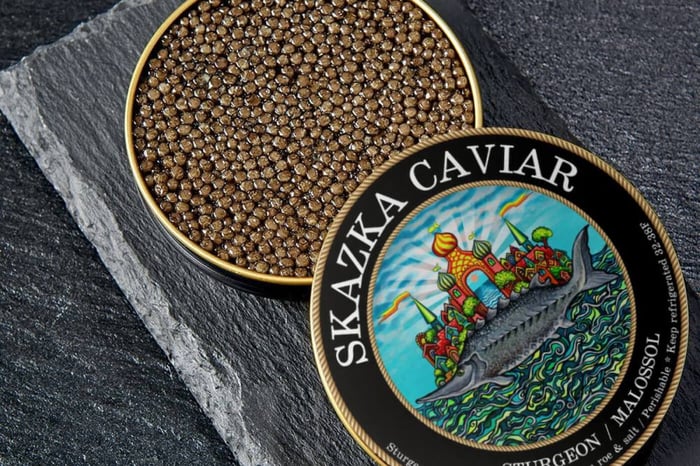 Caviar and Art: How Roe Inspires Creative Culinary Presentations: Caviar, the delicate roe of sturgeon and other fish, has long been celebrated as a symbol of luxury and refinement. Yet beyond its traditional reputation as an indulgent delicacy, caviar is now being recognized as a muse in the world of culinary artistry. Chefs across the globe are harnessing the unique visual and textural appeal of caviar to craft plates that are as much a feast for the eyes as they are for the palate. This fusion of caviar and art invites diners to explore a multisensory experience, where presentation, color, and creativity play as vital a role as taste.
Caviar and Art: How Roe Inspires Creative Culinary Presentations: Caviar, the delicate roe of sturgeon and other fish, has long been celebrated as a symbol of luxury and refinement. Yet beyond its traditional reputation as an indulgent delicacy, caviar is now being recognized as a muse in the world of culinary artistry. Chefs across the globe are harnessing the unique visual and textural appeal of caviar to craft plates that are as much a feast for the eyes as they are for the palate. This fusion of caviar and art invites diners to explore a multisensory experience, where presentation, color, and creativity play as vital a role as taste.
The Visual Allure of Caviar in Fine Dining
Caviar’s glossy, pearl-like beads offer an instant visual impact that transforms even the simplest dish into an elegant creation. The shimmering blacks, subtle greys, and vibrant oranges of various roe types act as a natural garnish, adding both color contrast and texture. Top chefs use caviar as a focal point on minimalist plates or as a textural accent to create depth and dimension. From the glistening black Ossetra pearls atop creamy blinis to salmon roe brightening a sushi platter, caviar’s striking presence elevates visual storytelling on the plate.
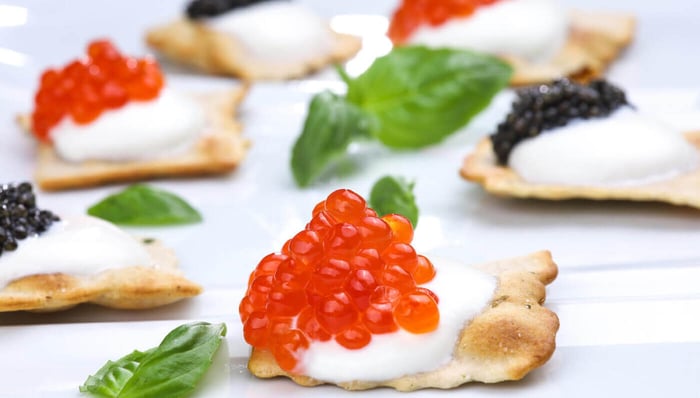
Read: Caviar Knives and Spoons: The Right Tools for the Job
Color Contrast: Using Roe to Enhance Aesthetic Balance
Caviar’s natural colors are an artist’s palette in the culinary world. Black sturgeon caviar creates stark contrasts against white or pale dishes, while the bright orange or red of salmon roe can energize a neutral base. Chefs use this color contrast to guide the diner’s eye, framing focal points or balancing the visual composition of the plate. For example, a quenelle of whitefish mousse crowned with a dollop of golden trout roe becomes not only a flavor contrast but a visual one, enhancing the sophistication of the dish’s presentation.
Texture as a Design Element
Beyond color, caviar’s unique texture adds an extra layer of intrigue to culinary design. The gentle pop of each pearl provides a sensory interplay that complements creamy, crispy, or smooth elements on a plate. This textural dimension is key to modern culinary art, where chefs deliberately juxtapose soft and crunchy, smooth and rough. In dishes like caviar-topped risotto or chilled panna cotta with a scattering of roe, the beads create visual punctuation while also introducing a tactile element that heightens the dining experience.
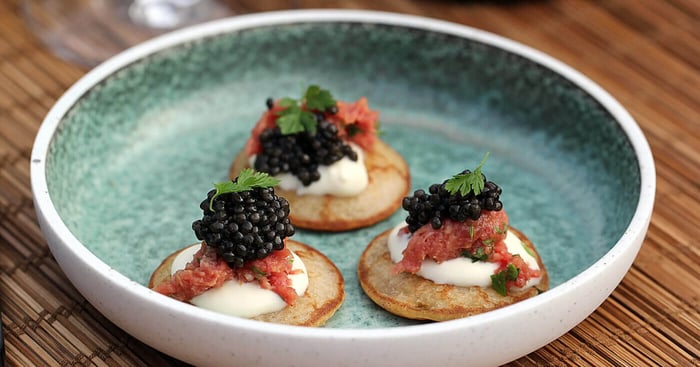
Read: Luxury Food Trends: How Caviar Fits Into the Modern Table
Minimalism and Negative Space in Caviar Presentations
In many contemporary culinary creations, less is more—an aesthetic where negative space is as important as the elements on the plate. Caviar, with its tiny but impactful form, allows chefs to craft minimalist designs that focus on precision and restraint. A single line of caviar across a plate, or a few pearls carefully arranged, demonstrates how culinary art borrows from fine art principles like minimalism and abstraction. This approach emphasizes the quality of each ingredient, inviting diners to appreciate the nuances of flavor and design.
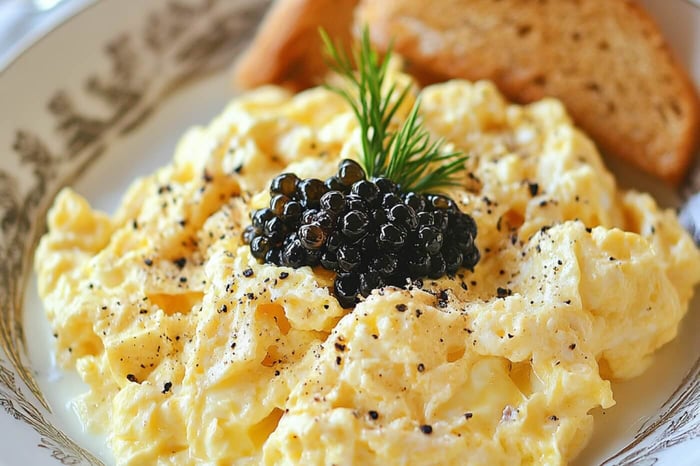
Cultural Fusion: Caviar as a Bridge in Global Cuisine
Caviar’s versatility extends beyond European fine dining; it has become a symbol of culinary fusion, appearing in Japanese, Scandinavian, Middle Eastern, and even Latin American-inspired dishes. Chefs integrate caviar into sushi, tacos, and ceviche, blending cultural traditions while using roe as a unifying visual and textural element. This fusion approach not only expands caviar’s culinary possibilities but also showcases how food, like art, transcends borders. By integrating caviar into diverse cuisines, chefs create globally inspired plates that are both beautiful and meaningful.
Storytelling Through Plating
In the world of modern gastronomy, presentation is often a form of storytelling, and caviar serves as a powerful narrative device. Chefs use roe to evoke themes of luxury, nature, and even sustainability. A dish featuring sustainable farmed caviar might tell a story of environmental responsibility, while a plate inspired by the ocean can use caviar to represent waves or sea foam. By carefully placing caviar in their presentations, chefs communicate not just flavor but also a story, emotion, or cultural message, making dining an immersive, artistic experience.
Conclusion
Caviar, long revered as a luxury ingredient, has evolved into a symbol of artistic expression in the culinary world. Its visual appeal, color contrasts, and unique texture inspire chefs to push the boundaries of plating, transforming dishes into edible works of art. From minimalist designs to cross-cultural fusions, caviar plays a starring role in the creative process, inviting diners to engage with food on a deeper level. As the worlds of food and art continue to merge, caviar stands as a testament to how even the smallest ingredient can inspire boundless creativity and storytelling on the plate.
About the Author
 Igor Fishbeyn - Caviar Purveyor
Igor Fishbeyn - Caviar Purveyor
Igor Fishbeyn is purveyor of fine sturgeon caviar and creator of the Skazka Caviar brand. He is an expert with decades of experience specializing in importing, wholesaling, and retailing the finest quality caviar in the world. Igor frequently writes about caviar news and various topics about the caviar industry. He lives in San Francisco with his wife and daughter.
Shop Skazka Caviar
Browse Our Exclusive Caviar Collection
[dib_prod_5322279944351] [dib_prod_5322391584927] [dib_prod_5322633216159][dib_prod_5322609590431]
Shop Caviar By Type
Shop Black Caviar | Shop Red Caviar | Shop Caviar Accessories
Shop Beluga Caviar | Shop Kaluga Caviar | Shop White Sturgeon Caviar
Shop Osetra Caviar | Shop Salmon Roe | Shop Albino Sturgeon Caviar



